#irving j. moore
Explore tagged Tumblr posts
Text






























Interiors from Making of a Male Model (1983 TV movie)
#making of a male model#joan collins#jon erik hexum#jon-erik hexum#made for tv#tv movie#80s movies#1980s film#80s fashion#80s hair#irving j. moore#interiors#80s design#set design
13 notes
·
View notes
Photo

Remembering the late Irving J. Moore (pictured here with Linda Gray on location for "Dallas"), who was born on April 7, 1919. He directed more than twice as many episodes of "Dynasty" than anyone else, and was also the director of the Who Shot J.R. episode of "Dallas". Photo by Maureen Donaldson.
1 note
·
View note
Text

























Series Premiere
Surfside 6 - Country Gentleman - ABC - October 6, 1960
Crime Drama
Running Time: 60 minutes
Written by Anne Howard Bailey & M. L. Schumann
Produced by Jerome L. Davis
Directed by Irving J. Moore
Stars:
Lee Patterson as Dave Thorne
Troy Donahue as Sandy Winfield II
Van Williams as Kenny Madison
Diane McBain as Dephne Dutton
Margarita Sierra as Cha Cha O'Brien
Mousie Garner as Mousie (credit only)
Ray Danton as Marty Hartman
Janet Lake as Paula Gladstone
Frank de Kova as Stinger
Fredd Wayne as Allan Abbott
John Hubbard as Roger Fielding
Robert Burton as Commodore Gladstone
Don 'Red' Barry as Lt. Snedigar (credit only)
Gary Conway as Tad Watson
#Country Gentleman#TV#Surfside 6#Crime Drama#ABC#1960#1960's#Troy Donahue#Lee Patterson#Van Williams#Diane McBain#Margarita Sierra#Ray Danton#Janet Lake#Series Premiere
7 notes
·
View notes
Text

JOMP Book Photo Challenge || October 30 || Read In October:
99. Carmilla by J. Sheridan Le Fanu & Carmen Maria Machado ★★★★ 100. What Moves the Dead by T. Kingfisher ★★★★★ 101. Of Needles and Pins by A.A. Freeman ★★★★ 102. The Thirteen Problems by Agatha Christie ★★★ 103. Labyrinth: The Novelization by A.C.H. Smith ★★★★ 104. Terrifying Tales by Edgar Allan Poe ★★★ 105. The Girl Who Loved Tom Gordon by Stephen King ★★★★ 106. V For Vendetta by Alan Moore ★★ 107. The Book of Cat Poems by Ana Sampson ★★★ 108. Dark Archives by Megan Rosenbloom ★★★ 109. Grandmaster of Demonic Cultivation Manhua Vol.3 by Mò Xiāng Tóng Xiù ★★★★ 110. Rip Van Winkle & The Legend of Sleepy Hollow by Washington Irving ★★ 111. A is for Arsenic: The Poisons of Agatha Christie by Kathryn Harkup ★★★ 112. Friends in Need by Elliot Hay ★★★ 113. Tea and Sympathetic Magic by Tansy Rayner Roberts ★★★★ 114. The Raven Boys by Maggie Stiefvater ★★★★
#October Reading#justonemorepage#jompbpc#book photo challenge#book photography#book stacks#books#Rose's All Hallows Read#Read This Month#2023 Reading#Not Out of Void But Out of Chaos#bpc catch up
23 notes
·
View notes
Text
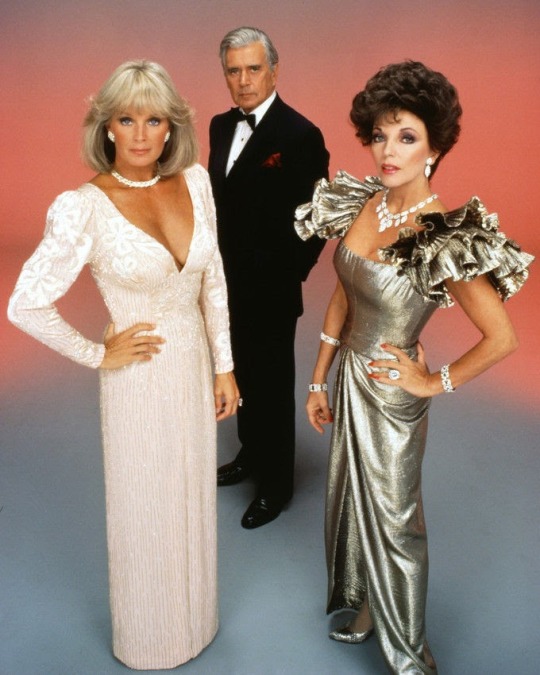
Dinasty (1981-1989) Dir. Irving J. Moore.
#dinasty#alexis carrington#joan collins#linda evans#krystle carrington#blake carrington#john forsythe#soap opera
37 notes
·
View notes
Text
Seen-it-all New York detective Frank Keller is unsettled – he has done twenty years on the force and could retire, and he hasn’t come to terms with his wife leaving him for a colleague. Joining up with an officer from another part of town to investigate a series of murders linked by the lonely hearts columns he finds he is getting seriously and possibly dangerously involved with Helen, one of the main suspects. Credits: TheMovieDb. Film Cast: Frank Keller: Al Pacino Helen Cruger: Ellen Barkin Sherman: John Goodman Terry: Michael Rooker Frank Keller Sr.: William Hickey Gruber: Richard Jenkins Serafino: Paul Calderon Struk: Gene Canfield Dargan: Larry Joshua Lieutenant: John Spencer Gina Gallagher / Lonelyheart: Christine Estabrook Miss Allen: Barbara Baxley Older Woman: Patricia Barry Murdered Man: Mark Phelan Raymond Brown: Michael O’Neill Doorman: Michael Fischetti Omar Maldonado: Luis Antonio Ramos Efram Maldonado: Rafael Báez Black Guy: Samuel L. Jackson Ernest Lee: Damien Leake Tommy: John Thaddeus Willie: Joshua Nelson Supermarket Manager: Christofer de Oni Supermarket Cashier: Dwayne McClary Helen’s Mother: Jacqueline Brookes Toastmaster: Thom Curley Cable Supervisor: Fred Sanders Clipboard Guy #2: Larry Mullane Clipboard Guy #3: Anthony Catanese Bartender: Thomas Wagner Doorman: Manny Alfaro James Mackey: Brian Paul Tense Woman: Deborah Taylor Sasha: Ferne Downey Raymond Brown’s Wife: Nancy Beatty Clipboard Guy #1: Tony De Santis Yuppie Detective #1: Jackie Laidlaw Yuppie Detective #2: Paul Hubbard Surveillance Team Member: James Kidnie Sherman’s Wife: Bridget O’Sullivan Criminal Type: Franz Fridal Hallway Cop: James O’Regan Hallway Cop: Wayne Best Young Cop: John Bourgeois Young Cop: Hugh Thompson Bride: Miranda de Pencier Groom: Ty Templeton Denice Gruber (scenes deleted): Lorraine Bracco Film Crew: Editor: David Bretherton Director: Harold Becker Director of Photography: Ronnie Taylor Unit Production Manager: Louis A. Stroller Producer: Martin Bregman Costume Design: Betsy Cox Script Supervisor: Blanche McDermaid First Assistant Camera: Yves Drapeau Second Assistant Director: Rocco Gismondi First Assistant Director: Michael E. Steele Second Assistant Director: David Sardi First Assistant Director: Thomas J. Mack Camera Operator: Andy Chmura Casting: Mary Colquhoun Production Design: John Jay Moore Second Assistant Director: Madeleine Henrié Additional Photography: Adam Holender Associate Producer: Michael Bregman Makeup Artist: Irving Buchman Hairstylist: Bryan Charbonneau Hairstylist: Bob Grimaldi Makeup Artist: Irene Kent Key Makeup Artist: Leslie A. Sebert Stunts: Dick Ziker Writer: Richard Price Stunts: Glenn R. Wilder Stunts: Buddy Joe Hooker Production Assistant: Liam Kiernan Stunts: Kenny Bates Stunts: Steve Boyum Stunts: Rick Parker Stunts: Shane Cardwell Production Manager: Barbara Kelly First Assistant Camera: Michael Hall First Assistant Camera: Horace Jordan Location Manager: Debra Beers Production Accountant: Dorothy Precious Production Coordinator: Toni Blay Sound Mixer: Keith A. Wester Boom Operator: Steve Switzer Gaffer: Rae Thurston Best Boy Grip: Howie Balbraith Grip: Randy Tambling Dolly Grip: Robert DaPrato First Assistant Art Direction: Lucinda Zak Set Decoration: Gordon Sim Set Dresser: Raman Majlath Property Master: Vic Rigler Wardrobe Master: Gail Filman Second Assistant Camera: Rick Perotto Assistant Location Manager: Anne Richardson Assistant Accountant: Karen Demontbrun Assistant Set Decoration: Richard Ferbrache Assistant Property Master: Jeff Poulis Wardrobe Assistant: Debi Weldon Production Secretary: Regina Robb Carpenter: Boyd Allen Scenic Artist: Reet Puhm Transportation Coordinator: Neil Montgomerie Unit Publicist: Joan Eisenberg Still Photographer: Rob McEwan Casting: Stuart Aikins Extras Casting: Scott Mansfield Additional Editing: John Wright Assistant Editor: Francine Fleishman Assistant Editor: Irvin Paik Assistant Editor: Charlene Olson Assistant Editor: Haydn Streeter Supervising Sound Editor: Norval D. Crutcher Supervising Sound Editor: Randle ...
1 note
·
View note
Text

''TIGHTROPE!''
Es una serie de drama criminal estadounidenseque se emitió en CBS desde septiembre de 1959 hasta septiembre de 1960, bajo el patrocinio alterno de JB Williams Company ( Aqua Velva , Lectric Shave, etc.) y American Tobacco ( Pall Mall ). Producida por Russell Rouse y Clarence Greene en asociación con Screen Gems , la serie está protagonizada por Mike Connors como un agente encubierto llamado "Nick" que fue asignado para infiltrarse en bandas criminales.
Año de inicio: 8 de septiembre de 1959
Año de finalización: 13 de septiembre de 1960
Dirección: Abner Biberman, Irving J. Moore, Russell Rouse, Oscar Rudolph
Créditos: Tomado de Wikipedia
https://en.wikipedia.org/wiki/Tightrope!
Para ver el tráiler ingresa al enlace:
https://www.youtube.com/watch?v=WivgftKBl0E
0 notes
Text
80 Books White People Need to Read
Here’s my next list! All links are now for Barnes and Noble! If you are interested in finding Black-owned bookstores in your area, check out this website: https://aalbc.com/bookstores/list.php ; I also have additional resources regarding Black-owned bookstores on my Instagram (@books_n_cats) if you are interested! As always, please continue to add books to these lists! ((please circulate this one as much as the LGBT one, these books are incredibly important)).
White Privilege: Unpacking the Invisible Knapsack by Peggy McIntosh
Killing Rage: Ending Racism by bell hooks
Where We Stand: Class Matters by bell hooks
The Fire Next Time by James Baldwin
The Fire This Time: A New Generation Speaks About Race by Jesmyn Ward
The New Jim Crow: Mass Incarceration in the Age of Colorblindness by Michelle Alexander
Rethinking Incarceration: Advocating for Justice That Restores by Dominique DuBois Gilliard
Hood Feminism: Notes from the Women That a Movement Forget by Mikki Kendall
Rise of the Warrior Cop: The Militarization of America’s Police Forces by Radley Balko
Open Season: Legalized Genocide of Colored People by Ben Crump
The Black and the Blue: A Cop Reveals the Crime, Racism, and Injustice in America’s Law Enforcement by Matthew Horace and Ron Harris
From the War on Poverty to the War on Crime: The Making of Mass Incarceration in America by Elizabeth Kai Hinton
Are Prisons Obsolete? by Angela Y. Davis
They Can’t Kill Us All: Ferguson, Baltimore, and a New Era in America’s Racial Justice Movement by Wesley Lowery
White Rage: The Unspoken Truth of Our Racial Divide by Carol Anderson
A Promise And A Way of Life: White Antiracist Activism by Becky Thompson
White Fragility: Why It’s So Hard for White People to Talk About Racism by Robin DiAngelo
Disrupting White Supremacy From Within edited by Jennifer Harvey, Karin Ac. Case and Robin Hawley Gorsline
How to Be an Anti-Racist by Ibram X. Kendi
Why I’m No Longer Talking to White People About Race by Reni Eddo-Lodge
Why Are All the Black Kids Sitting Together in the Cafeteria?: And Other Conversations About Race by Beverly Daniel Tatum
So You Want to Talk About Race by Ijeoma Oluo
Uprooting Racism: How White People Can Work for Racial Justice by Paul Kivel
Witnessing Whiteness by Shelly Tochluk
Race Talk and the Conspiracy of Silence: Understanding and Facilitating Difficult Dialogues on Race by Derald Wing Sue
Towards the Other America: Anti-Racist Resources for White People Taking Action for Black Lives Matter by Chris Crass (be advised, this came out in 2015 and is not up to date with current events obviously)
Understanding White Privilege: Creating Pathways to Authentic Relationships Across Race by Frances Kendall
The Possessive Investment in Whiteness: How White People Profit from Identify Politics by George Lipsitz
Waking Up White, and Finding Myself in the Story of Race by Debby Irving
How I Shed My Skin: Unlearning the Racist Lessons of a Southern Childhood by Jim Grimsley
Stamped from the Beginning: The Definitive History of Racist Ideas in America by Ibram X. Kendi
White Like Me: Reflections on Race from a Privileged Son by Tim Wise
Benign Bigotry: The Psychology of Subtle Prejudice by Kristin J. Anderson
America’s Original Sin: Racism, White Privilege, and the Bridge to a New America by Jim Wallis
Biased: Uncovering the Hidden Prejudice That Shapes What We Say and Do by Jennifer L. Eberhardt
Raising White Kids by Jennifer Harvey
Stamped: Racism, Antiracism, and You by Jason Reynolds and Ibram X. Kendi
The Guide for White Women who Teach Black Boys by Eddie Moore Jr, Ali Michael, and Marguerite Penick-Parks
What White Children Need to Know About Race by Ali Michael
White By Law by Ian Haney Lopez
Between the World and Me by Ta-Nehisi Coates
My Soul Is Rested: The Story of the Civil Rights Movement in the Deep South by Howell Raines
Race Matters by Cornel West
American Lynching by Ashraf H.A. Rushdy
Fatal Invention: How Science, Politics, and Big Business Re-Create Race in the Twenty-First Century by Dorothy Roberts
White Flight: Atlanta and the Making of Modern Conservatism by Kevin Kruse
This Bridge Called My Back: Writings by Radical Women of Color edited by Cherrie Moraga and Gloria Anzaldua
Me and White Supremacy: Combat Racism, Change the World, and Become a Good Ancestor by Layla F. Saad
Racism Without Racists by Eduardo Bonilla-Silva
The Possessive Investment in Whiteness: How White People Profit From Identity Politics by George Lipsitz
Black Feminist Thought: Knowledge, Consciousness, and the Politics of Empowerment by Patricia Hill Collins
When Affirmative Action Was White: An Untold History of Inequality in Twentieth-Century America by Ira Katznelson
Sister Outsider: Essays and Speeches by Audre Lorde
Habits of Whiteness: A Pragmatist Reconstruction by Terrance MacMullan
Eloquent Rage: A Black Feminist Discovers Her Superpower by Brittney Cooper
Sister Citizen: Shame, Stereotypes, and Black Women in America by Melissa V. Harris-Perry
Heavy: An American Memoir by Kiese Laymon
I’m Still Here: Black Dignity in a World Made for Whiteness by Austin Channing Brown
An African American and Latinx History of the United States by Paul Ortiz
Blueprint for Black Power: A Moral, Political, and Economic Imperative for the Twenty-First Century by Amos N. Wilson
The Man-Not: Race, Class, Genre, and the Dilemmas of Black Manhood by Tommy J. Curry
Freedom Is A Constant Struggle by Angela Davis
Your Silence Will Not Protect You by Audre Lorde
Locking Up Our Own: Crime and Punishment in Black America by James Forman
The Half Has Never Been Told: Slavery and the Making of American Capitalism by Edward E. Baptist
The Price for Their Pound of Flesh: The Value of the Enslaved, From Womb to Grave, in the Building of a Nation by Daina Ramey Berry
Slavery by Another Name: The Re-enslavement of Black Americans from the Civil War to World War II by Douglas A. Blackmon
The Condemnation of Blackness: Race, Crime, and the Making of Modern Urban America by Khalil Gibran Muhammad
The Color of Law: A Forgotten History of How Our Government Segregated America by Richard Rothstein
The Origins of the Urban Crisis: Race and Inequality in Postwar Detroit by Thomas J. Sugrue
From #BlackLivesMatter to Black Liberation by Keeanga-Yamahtta Taylor
Give Us the Ballot: The Modern Struggle for Voting Rights in America by Ari Berman
One Person, No Vote: How Voter Suppression is Destroying our Democracy by Carol Anderson
Antiracism: An Introduction by Alex Zamalin
The Racial Healing Handbook: Practical Activities to Help You Challenge Privilege, Confront Systemic Racism, and Engage in Collective Healing by Anneliese A. Singh
Chokehold: Policing Black Men by Paul Butler
Democracy in Black: How Race Still Enslaves the American Soul by Eddie S. Glaude
Tears We Cannot Stop: A Sermon to White America by Michael Eric Dyson
Things That Make White People Uncomfortable by Michael Bennett
When They Call You a Terrorist: A Black Lives Matter Memoir by Patrisse Khan-Cullors
#books#booklr#white privilege#black lives matter#text#nonhp#two more to go after this one!#again please circulate and reblog this one too!#the LGBT list got so much attention#but please pay attention to these books as well#and there's no way this list shows up in any tags#because of the links#so reblogs are very important!!!
148 notes
·
View notes
Text
THREE LITTLE PIGSKINS
December 8, 1934
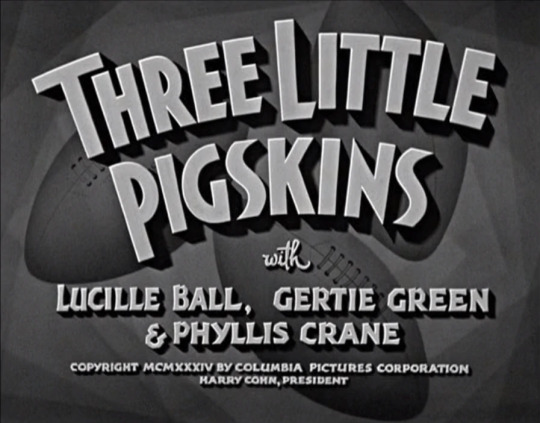
Three Little Pigskins is a 1934 Columbia Pictures short subject directed by Raymond McCarey and starring slapstick comedy team The Three Stooges. It is the fourth entry in the series starring the comedians, who released 190 short films for the studio between 1934 and 1959.
Synopsis ~ Moe, Larry and Curly are hired to promote a university football team. They're soon mistaken for the school's famous star athletes, "The Three Horsemen." As the star athletes, they are hired by a gangster to secretly play on his professional team, but of course the boys know nothing about football.

PRINCIPAL CAST

The Three Stooges were an American vaudeville and comedy team active from 1922 until 1970. Their hallmark was physical farce and slapstick. Six Stooges appeared over the act's run with only three active at any given time. In this film they are:
Moe Howard (Moe) born Moses Horwitz in 1897. Died 1975.
Larry Fine (Larry) born Larry Feinberg in 1902. Died 1975.
Curly Howard (Curly) born Jerome Horwitz in 1903, Moe’s younger brother. Died in 1952.
This short film is the only time the three worked with Lucille Ball.

Lucille Ball (Daisy Simms). This is Ball’s 17th film to be released since 1933. It is her 13th in 1934 alone.
Gertie Green (Lulu Banks) makes the third of her four screen appearances.
Phyllis Crane (Molly Gray) was also seen with Lucille Ball in Broadway Bill and Men of the Night, both in 1934.
UNCREDITED CAST (in alphabetical order)
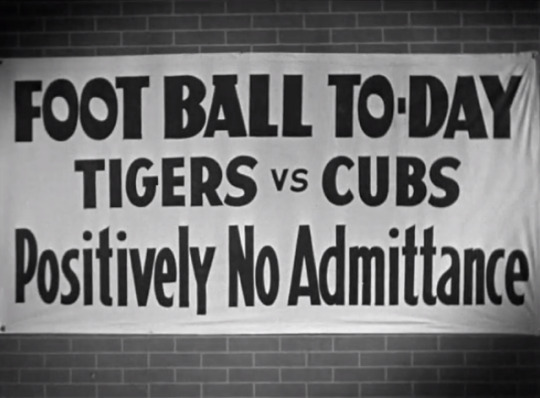
Harry Bowen (Boulder Dam PR Man) also appeared with Lucille Ball in The Whole Town’s Talking (1935) and Dummy Ache (1936).
Lynton Brent (1st Man Panhandled by Moe) appeared with Lucille Ball in seven other films between 1934 and 1939.
Bobby Burns (Man Panhandled by Larry) also appeared with Lucille Ball and Harry Bowen in Dummy Ache (1936).
Charles Dorety (2nd Photographer) also appeared with Lucille Ball in His Old Flame (1935).
Milton Douglas (Henchman) makes his only appearance with Lucille Ball.
Oscar ‘Dutch’ Hendrian (Referee) did five other films with Lucille Ball between 1934 and 1935.
William J. Irving (1st Photographer) did five other films with Lucille Ball between 1933 and 1935.
Johnny Kascier (Man Panhandled by Curly) makes his only appearance with Lucille Ball.
Walter Long (Joe Stacks) also appeared with Lucille Ball in The Whole Town’s Talking (1935).
Roger Moore (Pete, Joe’s Henchman) also appeared with Lucille Ball in Meet the People (1944) and The Fuller Brush Girl (1950).
The role of Joe is sometimes attributed to Joseph Young.
Jimmy Phillips (2nd Man Panhandled by Moe) also appeared with Lucille Ball in The Whole Town’s Talking (1935)
Larry Wheat (3rd Man Panhandled by Moe) appeared with Lucille Ball in Thousands Cheer (1943).
PIGSKIN TRIVIA

Three Little Pigskins was filmed from October 25 to 30, 1934 in and around Los Angeles.

The film's title is a multiple pun, derived from the children’s nursery rhyme the Three Little Pigs, along with ‘pigskin’ being a synonym for a football.
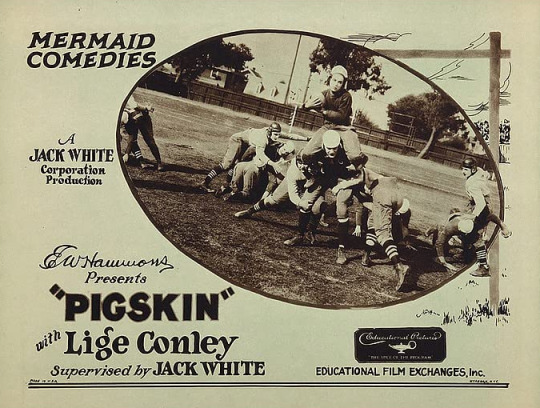
In 1924, Mermaid Comedies produced Pigskin, starring silent comedy short starring Lige Conley.
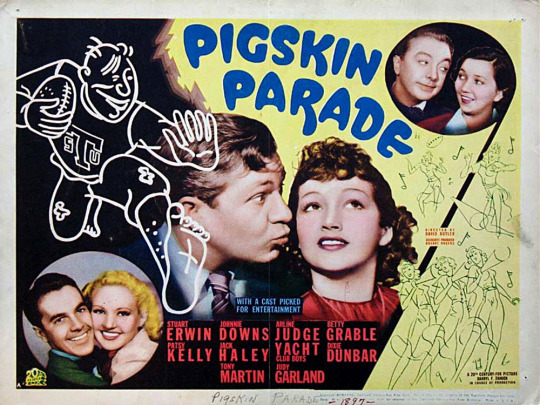
In 1936 a film titled Pigskin Parade premiered earning its leading man an Oscar nomination.

The second half of the film was shot at Gilmore Stadium, and its name on the scoreboard appears in several shots. The Los Angeles stadium was newly built in 1934 and had a seating capacity of 18,000. The football team the Stooges play against was from Loyola Marymount University, a regular tenant of Gilmore Stadium.
The Cubs on the scoreboard refers to the Westwood Cubs, who had played at the stadium on the October 28, 1934. The Tigers refers to the Occidental Tigers, a college team from Los Angeles. Neither team appears in the film.

Coincidentally, the stadium was demolished in 1952 to make way for CBS Television City, a production facility that was opened by Lucille Ball as the network’s reigning star, although “I Love Lucy” never filmed there. One of their major tenants was the Hollywood Stars Baseball team, which Fred Mertz mentions during “In Palm Springs” (ILL S4;E26) in March 1955.
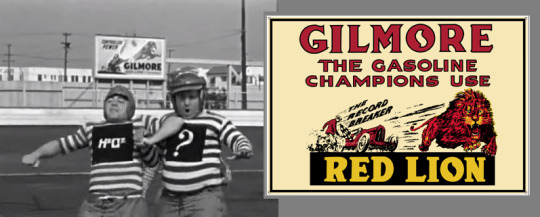
There is also a shot that includes a billboard for Gilmore Oil, including its trademark symbol, a red lion. The Gilmore Oil Company was an independent oil company in California founded by Arthur Fremont Gilmore, whom the stadium was named for. At its peak, they operated over three thousand gas stations on the West Coast. In the 1940s, the company was acquired and then merged into a group which eventually became Mobil.

The address 6317 Yucca Street on the poster behind Curly and Moe was the actual location of filming. Coincidentally, it is about a quarter mile from the Stooges’ Star on the Hollywood Walk of Fame. the location is now the Los Angeles campus of The American Musical and Dramatic Academy (AMDA).

Boulder Dam College is a fictional school. Boulder Dam is located in Clark County, Nevada and was under construction at the time of filming. It named Boulder Dam in 1933 and dedicated in 1935 and opened in 1936. It was renamed Hoover Dam in 1946.

Beyond the stadium can be glimpsed the Fairfax Theatre sign. The Fairfax Theatre opened in 1930 as part of a larger retail complex. The theatre was ‘triplexed’ in the 1980s but closed for good in 2010 after roof damage from heavy rains. The owner was unwilling to make repairs although the façade still remains.

Later in her career, Lucille Ball (apparently referring to the seltzer squirting scene) would remark,
"The only thing I learned from The Three Stooges was how to duck. I still got wet!"
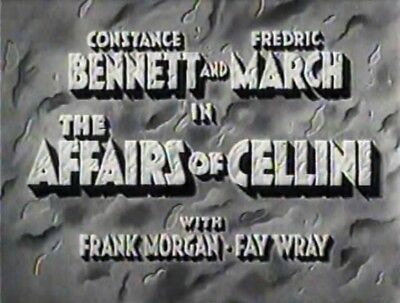
While Lucille Ball was filming Three Little Pigskins, The Affairs of Cellini, in which she played an uncredited lady in waiting, was in wide release, having premiered in late August 1934.

Moe Howard once called Three Little Pigskins "a humdinger of bangs and bruises," as it marked the first time the Stooges flatly refused to perform a stunt. In the film, during the game the boys are stopped by photographers to pose for a picture, when the football players then tackle them. The team consisted of genuine college football players, and the Stooges were afraid of being hurt. Larry Fine, the smallest and lightest of the three, told director Raymond McCarey, “We've never used stunt doubles before but we certainly need them now."

The fact that both Curly and Larry had been hurt a few days earlier (Curly broke his leg riding down the dumbwaiter and Larry lost a tooth due to a mistimed punch) reinforced the trio's decision to opt out of the scene. Less than an hour after the exchange, the studio found three stunt doubles made up to look like the Stooges. Two of the three were seriously injured as were all four photographers.
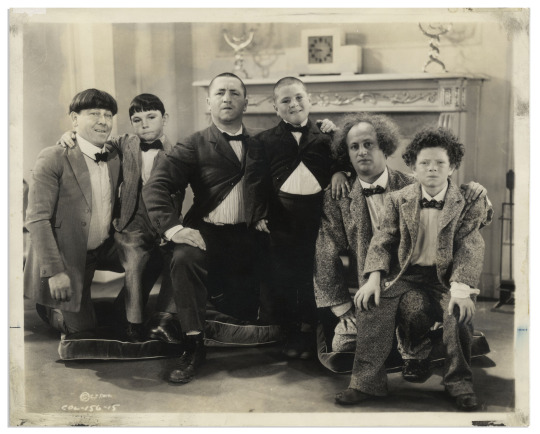
A planned concluding scene had the Stooges, years later, telling the story to their sons. It is unknown if this scene was ever filmed, but publicity photos exist of the Stooges, each with a young actor, all made up and dressed to resemble their older counterparts.

In 1996, Exclusive Premiere created limited edition action figures of the Stooges in costumes from the film.
PIGSKIN PROGRESS
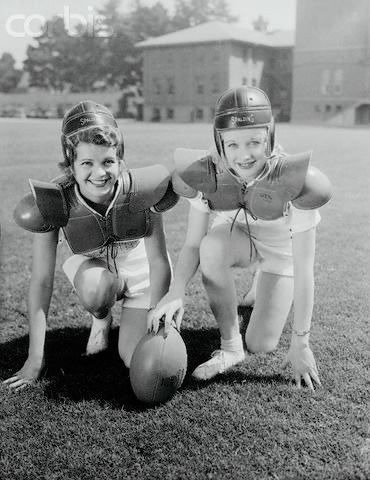
As a young model and actress, Lucille Ball didn’t just take film jobs. Here she poses with Billie Seward at Bovard Field in Los Angeles.
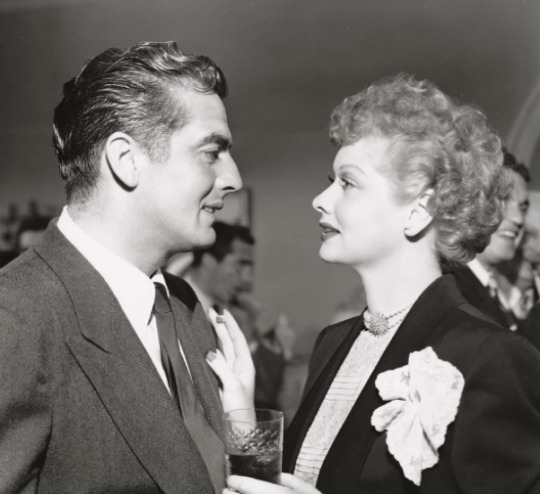
In 1949, Lucille Ball and Victor Mature starred in a film about a professional football player, Easy Living.

Ball’s radio show “My Favorite Husband” tackled gridiron gimmickry in 1950.
For a further look at Lucy and the Gridiron, click here!
23 notes
·
View notes
Text
"MANK" (2020) Review

"MANK" (2020) Review When it comes to biopics about Hollywood history, I must admit that I have a slight addiction to them. I really enjoy reading about Hollywood history. And I especially enjoy reading about the industry's so-called "Golden Age". So, when I learned about the upcoming release of "MANK", a biopic about Hollywood screenwriter, Herman J. Mankiewicz, I was pretty eager to see it.
However . . . I never got the chance to watch "MANK" in movie theaters during the fall/winter of 2020-2021. "MANK" had the bad luck to be released while the entire world was in the grip of the COVID-19 pandemic. Although Netflix had released the film in theaters for a limited period in November 2020, the streaming service/production company eventually released it on its streaming service the following month. Because of this, a good number of months had passed before I had eventually watched it on television. "MANK" began in 1940, when the then young wunderkind Orson Welles hired veteran screenwriter Herman J. Mankiewicz to write the screenplay for his new movie, "CITIZEN KANE". Unfortunately, Mankiewicz is in Victorville, CA; recovering from a broken leg he had sustained in a car crash. With the assistance of his secretary Rita Alexander, he becomes aware of the similarities between the movie's main character and newspaper magnate William Randolph Hearst. This awareness not only inspired Mankiewicz to work on Welles' screenplay, but also led him to recall his history with Hearst, the latter's mistress, Marion Davies; and the smear campaign against Upton Sinclair's 1934 California gubernatorial campaign. Since "MANK" is not a documentary, but a historical drama, I knew that its narrative would not be completely accurate. However, I do believe that screenwriter Jack Fincher and his brother, director David Fincher, took a lot of liberties in regard to historical accuracies. Perhaps too much. Yes, the movie featured historical accuracies that included Mankiewicz's car accident and broken leg, his employment with both Paramount Pictures and Metro-Goldwyn-Mayer Studios, Upton Sinclair's bid for Governor of California in 1934 and of course, Mankiewicz's collaboration with Welles and John Houseman on "CITIZEN KANE". However, the main problem with "MANK" is that Jack Fincher tried to connect the efforts to undermine Upton Sinclair's gubernatorial campaign with Mankiewicz's screenplay for "CITIZEN KANE". And it did not exactly work. It failed to work due to Mankiewicz's political beliefs. Considering that Sinclair had ran for governor as a Democrat, it seemed implausible that Mank would have been that upset over the state's business leaders - which included movie studio chief Louis B. Mayer, studio producer Irving Thalberg; and newspaper magnates like Hearst and Harry Chandler - going out of their way to undermine Sinclair's campaign. Mankiewicz's politics tend to skewer toward conservative, except when it came to fascism. It seems quite obvious that Jack Fincher needed an explanation for why Mankiewicz had been willing to write "CITIZEN KANE", a scathing portrait of William Randolph Hearst. So he invented one. But you know what? I find myself wondering what topic had really caught the Finchers' attention - Mankiewicz's connection with Hearst, Davies and "CITIZEN KANE"; or the 1934 California gubernatorial election. Because honestly . . . it seemed as if both screenwriter and director were more interested in the latter. If that was the case, then the Fincher brothers should have solely focused the movie's topic on the election. I have another quibble about "MANK". One I found some of the dialogue in the film's first half hour a bit too stylized for my tastes. In one early scene, it seemed as if the Finchers had tried too hard to recapture a West Coast version of the Algonquin Round Table. Also, why did the Finchers shot this film in black-and-white? What was the point? Because to me, this decision to film in black-and-white seemed like another attempt at a homage to Hollywood's Golden Age via a gimmick. And I am getting weary of gimmicks - especially unnecessary ones in Hollywood productions. Otherwise, I did not have a problem with "MANK". There are at least three reasons why I ended up enjoying this film. One, the movie featured a first-rate character study of Herman J. Mankiewicz. I have read a good deal about him. Granted, the movie was not completely honest in the writer's characterization. The latter's political beliefs would have never led him to get upset, let alone outraged over the campaign against Upton Sinclair. However, David Fincher's screenplay did a very admirable job in capturing Mankiewicz's other traits - including his wit, his addictions and air of weariness. If I must be frank, I believe Gary Oldman's superb performance achieved this even more than the Finchers' screenplay and direction. Two, although I found the creation of "CITIZEN KANE" rather interesting, it did not strike me as particularly unique. Well . . . I take that back. "MANK" did tell this story specifically from the screenwriter's point-of-view. The 1999 HBO film, "RKO 281", told this story mainly from Orson Welles' point-of-view. However, the movie's depiction of Hollywood's connection to California's 1934 gubernatorial election struck me as the film's more interesting and original aspect. This was especially apparent in scenes that featured a montage of the phony newsreels criticizing Sinclair and the election's final night. One aspect of "MANK" really impressed me - namely the performances featured in the film. They either ranged from competent performances from the likes of Tom Pelphrey as Joseph Mankiewicz, Charles Dance as William Randolph Hearst, Ferdinand Kingsley as Irving Thalberg, Joseph Cross as Charles Lederer, Toby Leonard Moore as David Selznick, Sam Troughton as John Houseman, Bill Nye as Upton Sinclair and Arliss Howard as Louis B. Mayer. Mind you, I believe there were times when Howard's performance threatened to become a bit too theatrical. But I still enjoyed it. I was very impressed by the performances from Tuppence Middleton as Sara Mankiewicz, Tom Burke as Orson Welles and Amanda Seyfried as Marion Davies. As much as Seyfriend's performance impressed me, I do not believe she had deserved an Oscar or any other acting nomination for her performance. I do not believe her performance was that exceptional. There were a handful of performances that I really enjoyed. I thought Jamie McShane gave a very emotional performance as test director Shelly Metcalf, who shot the anti-Sinclair newsreels. Frankly, Lily Collins' performance as Mankiewicz's no-nonsense secretary Rita Alexander impressed me a lot more than Seyfriend's performance. And I thought she and the leading man had managed to create a superb screen chemistry. Although I believed that Seyfriend's acting nominations were undeserved, I cannot say the same for Gary Oldman's performance as Herman J. Mankiewicz. I thought he was superb as the screenwriting icon agonizing over his earlier apathy toward the governor's election, while struggling over his alcoholism and creation of the "CITIZEN KANE" screenplay. He truly deserved his acting nominations - especially in one scene in which the main character went into a drunken rant against the Hollywood machine and Hearst. "MANK" was definitely not the best movie of 2020. Perhaps it was one of the better ones. I still believe it could have been a better film if David and Jack Fincher had not attempted to connect the creation of "CITIZEN KANE" with California's 1934 governor election. But its re-creation of the latter proved to be one of the film's highlights. And the movie also benefited from excellent direction from David Fincher and excellent performances from a cast led by the always superb Gary Oldman. Honestly, I would have no qualms about buying a DVD copy of this film.
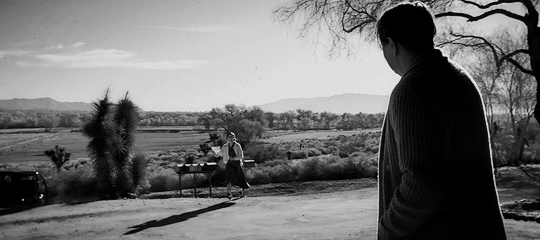
#mank#mank 2020#david fincher#jack fincher#herman j. mankiewicz#california 1934 governor election#citizen kane#old hollywood#Great Depression#gary oldman#amanda seyfried#marion davies#Lily Collins#rita alexander#tom burke#orson welles#charles dance#william randolph hearst#arliss howard#louis b. mayer#toby leonard moore#david o. selznick#ferdinand kingsley#irving thalberg#bill nye#upton sinclair#tuppence middleton#tom pelphrey#joseph l. mankiewicz#joseph cross
4 notes
·
View notes
Note
Can you tell us anything more about John Hartnell's time on the Voltage?
Hell yeah, I can! I have some pictures from the log books I can post later, too. I legit sat for H O U R S reading tiny handwriting from the master’s logs. Most of the logs were lists of chores, punishments, notes on the weather, and any major events. John’s time on the Volage can be divided pretty neatly in half, between the ship’s North American tour, and its Irish Sea patrol, all between 1841-45.
The North American part was probably pretty exciting for him, considering that he’d been a shoemaker since he was thirteen years old. Compared to what his brother had been up to on the Volage (the Aden Expedition, Battle of Chuenpi, etc.), it focused less on military ventures and more on transportation and patrol. The first major thing it did was in December of 1841, when it accompanied the HMS Warspite and HMS Thalia in taking the King of Prussia, Frederick William IV to England to attend the christening of the Prince of Wales. After that, it scurried over to Plymouth to get new fittings, and then took off for the Caribbean.
A lot happened in the Caribbean, and reading through the log books (always written in very non-emotional language, but still entertaining) paints a very eclectic picture of their activities. The Volage went to Jamaica first, awaiting orders until they were ordered to go to Saint Martha to pick up... $800,000 in gold. Legit, that sat on the Volage for two months until they dropped it off in Port Royal. By then, half the crew was incredibly ill with a mix of diseases including what might have been dysentery. Amazingly, for all of John’s terrible luck, he doesn’t appear on the sick list, even as one of the lieutenant’s eventually died as well as the clerk.
They scurried back and forth across the Caribbean from January of 1842 until they departed for Halifax, Nova Scotia later that summer. (Land of @theiceandbones!) In all honesty, the Volage didn’t get up to much during it’s time in Halifax. They didn’t necessarily have a mission, but it does make for some really entertaining reading! There was a lot of shore leave, for instance. Here are some of the notes I wrote on my read-through between the Caribbean and Halifax (which is from ADM 54/312):
Mondays and Fridays are mandatory clothes-washing days.
8th of July 1842 - “Punished Michael Logan with 48 [!] lashes for Disobedience of Orders and Insolence”
12th of July 1842, 6pm - “Committed to the deep the Body of Samuel Marvin (AB) Deceased.” / “Departed this life William Baillie (boy) - Buried at sea on the 13th.”
18th of July 1842, 10:50 pm - “Heard the report of several Guns from the North” [in Halifax]
20th of July 1842 - Halifax Citadel visit and the burial of Robert Webb (boy), Samuel Gibbon, John Barnes, and Samuel Brummage (carpenter’s mate) on shore
Godden reports that several warm nights, sailors were permitted to use their hammocks and sleep on the beach! (I put a smiley face next to my note here!)
Most of their Halifax mooring was spent cleaning. Lots of repainting, holystoning, repairing, etc.
Multiple discharges for “uselessness” and “disgrace”.
The latter note is really interesting, considering that none other than Charles Dickens visited Halifax that same year, and made note of sailors making total idiots out of themselves on oysters and champagne. Indeed, there are plenty of punishments recorded for that summer for drunkenness, insubordination, and desertion, again sometimes up to 48 lashes. (I’ll post a picture of the log just to confirm that.) On a high note, John Hartnell wasn’t punished once! And believe me, I looked!
They did have to have some repair work done to fix a leak in October before scurrying back down south with the “Squadron”. Godden makes some pretty boring notes about looking at the United States coast (as in essentially saying, “Yep, there it is!”) before they hang tight to the coast of Mexico.
The Volage appears to have been outfitted for doing survey work, which is part of what they did for the next few months. Between that, mooring for absolutely nothing, and hanging out with slave ship hunters (I like to think they high-fived the HMS Racer at some point) their zig-zag order of ports of call are:
Barbados > Puerto Rico > Grenada > St. Vincent > Jamaica > St. Lucie > Antigua > Jamaica (long-term Port Royal mooring) > Haiti
By early 1843, the Volage was headed back home. They docked in Plymouth for a time before getting their next orders for the Admiralty for the apparently much-maligned Irish Sea duty. At this point, Captain William Dickson had a temporary replacement for the deceased Lt. Davey, but eventually, that lieutenant had to leave as well. Captain Dickson did get a note from the Admiralty that he was to get his replacement at the Cove of Cork, and according to the sudden burst of tiny handwriting at the bottom of the page on Tuesday, August 29th, 1843, Captain Dickson totally forgot about that. Literally, the note for the day is kind of falling off the page from squeezing it in, but reads: “Read the Commission of Lieut J Irving”.
Because Lieutenant John Irving hopped on board as a new replacement, thus using those sweet, sweet letters of his to describe the next few months. He was absolutely meticulous about dating his letters, and having them on hand in his memoir made it easy to line up with Godden’s notes in the master’s log, confirming everything between the two of them. This time, Irish patrol got kind of exciting.
First, here’s Irving talking about joining the Volage, saying much nicer things about Capt. Dickson considering the captain was probably going, “Oh shit right I forgot we were doing this.”
“To my great joy I found the ‘Volage’ at anchor here. I was afraid she might have gone somewhere else. I went on board direct from the steamer, and was introduced to Sir William Dickson, the Captain; rigged myself in a blue coat and a pair of epaulettes; the hands were turned up, and the Captain read my commission appointing me lieutenant of the ship to the ship’s company. There are three of us. I am the second in seniority. Our mess consists of seven--viz., three lieutenants, one master, surgeon, a lieutenant of marines. They are all very good fellows. I was three years messmate of one of them in a former ship, so am comfortable in that respect.”
Irving noted that the officers were frequently invited to parties in Cork (”I could be at parties every day if I liked;”), and Godden does say that the rest of the crew were given shore leave fairly frequently, even though they didn’t have enough officers to allow them to leave as often.
For the next four months, the Volage remained at Cork, doing patrol with several other man-of-war’s. On land, there were frequent clashes between the Protestants and the Catholics, but more importantly, there were the Repealers following Daniel O’Connell’s urging to repeal the Acts of the Union and re-establish the independent Kingdom of Ireland. Between Irving and Godden, the image of this time from the perspective of the Volage is one of a lot of bloody rumors and high tension (a Protestant curate was killed, houses were being burned down). However, O’Connell’s followers were very civil to the sailors and actually invited some of the Volage officers to visit their homes. Irving called their hospitality “quite Highland”.
The Volage was temporarily relieved of its patrol in December, and returned to Plymouth by January of 1844 for refitting and repair work after shearing off part of her keel. Godden and Irving both noted that sailors and officers were boarded on a hulk, or a non-sailing ship. Godden also noted that several sailors were permitted leave to go visiting nearby. (John Hartnell did have family in Plymouth, and Thomas Hartnell may have been visiting the area at the same time, if a pet theory of mine holds up.)
They were back in the Cove of Cork by February, with the Volage now as the flagship. During a period between February and June, the Volage frequently made trips between Cork and the town of Bantry, after further pro-Repealer agitation began to raise tensions once more. Godden’s log doesn’t say much on the subject aside from weather reports and notes on officers leaving the ship to attend parties, major gatherings in town (there’s a really interesting bit from Irving on scaring the bejeezus out of a group of paraders and stealing the Waterford city flag), and switching out officers. However, the tensions once again didn’t amount to much more than far-off reports of violence and a few observations of pissed-off “pisantry”. The Volage did return to Plymouth for Christmas before returning for a short turn in Cork, and then being paid off completely. The log for that topic shows that John Hartnell was paid off on February 1st, 1845.
As far as what life would have been like for John Hartnell on the Volage, it’s hard to say for sure since, once again, Godden’s logs are impersonal. However, he was responsible for recording all punishments, injuries, illnesses, and deaths, of which there was no lack. He also kept meticulous note of what chores were to be done on particular days, as well as drills. I noticed there was a lot of repetition in the chore schedule, and there was a slight uptick in sailors suddenly taking ill with “unknown” illnesses about two and a half years in, especially on days that had chores requiring a little more elbow grease.
But I think, as I said, this would have been very exciting for someone like John. After all, he voluntarily signed up for the Erebus four months after signing off on the Volage. Unfortunately, we don’t have any letters to or from him that might hint to how he felt during this time, so we have to take it from his actions rather than his words. I like to think he enjoyed himself.
33 notes
·
View notes
Text

















Joan Collins in Making of a Male Model (1983 TV movie)
#joan collins#making of a male model#1983#tv movie#1980s film#80s movies#irving j. moore#irving j moore#80s fashion#80s hair
6 notes
·
View notes
Photo

Remembering the late Irving J. Moore, who was born on April 7, 1919. He directed over fifty episodes of both Dynasty and Dallas, including the famous “Who Shot J.R.?” episode. He’s pictured here with Linda Gray in a photo posted on Twitter a few years ago by Dallas Fanzine.
5 notes
·
View notes
Photo

Dr. Butcher & CJ Moore - Southern Vangard Radio Interview Sessions BANG! @southernvangard #radio presents the DR. BUTCHER & CJ MOORE interview session! Normally, this would have been a Twice A Week week. You know, the usual - mix show on Tuesday, all new joints, Meeks and Doe talking trash, and then an interview session to follow on Thursday. However, the universe had something different in mind. These two legends were originally scheduled to be on the mix show this week to talk about “AGAINST ALL ODDS,” their new project with DA ODD COUPLE (ROB SWIFT & MISTA SINISTA of the X-ECUTIONERS) and keep it moving - but this thing turned into a TWO AND HALF HOUR history lesson. We let the tape roll and said forget all the new rap this week, this conversation is too important to stop. No cap, as the young folks say - this is foundation / architect / cornerstone type content, Vangardians. While we did manage to get the low down on the phenomenal production & engineering Butcher and CJ provided on the new LP with Rob & Sinista, as well as why they pulled in fresh talent like KE TURNER & RAY LUGER as features - we quickly got DEEP in that hip-hop Encyclopedia Brittanica: 1212 STUDIOS. PAUL C. BLACK, ROCK & RON. ULTRAMAGNETIC MC’S. SIMPLY II POSITIVE aka ORGANIZED KONFUSION. PHAROAHE MONCH. PRINCE PO. LARGE PROFESSOR. DE LA SOUL. TOMMY BOY RECORDS. TOM SILVERMAN. DANTE ROSS. STETSASONIC. QUEEN LATIFAH. FATHER MC. X-MEN. AKINYELE. SIR JINX. THE BEATNUTS. JUJU. PSYCHO LES. MF GRIMM. KOOL G RAP. IRV GOTTI. JAY-Z. DAME DASH. ROCAFELLA. DMX. RUFF RYDERS. NORE. THE NEPTUNES. PHARRELL. LL COOL J. DAVE JUSTICE. HALLE BERRY. Say WHAT?! Man look - YOU’RE WAAAAALCOME. For real, you’re really, really, REALLY welcome. So Happy New Year and all that, f*ck 2020, see you in 2021, and you got damn RIGHT it’s DOE and MEEKS with what is ALWAYS that #SmithsonianGrade #TwiceAWeek #WeAreTheGard // southernvangard.com // @southernvangard on #applepodcasts #stitcherradio #soundcloud #mixcloud #youtube // #hiphop #rap #undergroundhiphop #boombap #DJ #mix #interview #podcast #ATL #WORLDWIDE #RIPCOMBATJACK Recorded live December 27, 2020 @ Dirty Blanket Studios, Marietta, GA southernvangard.com (at Marietta, Atlanta, GA) https://www.instagram.com/p/CJd8RoGryWa/?igshid=q8geohpj8y9u
#radio#smithsoniangrade#twiceaweek#wearethegard#applepodcasts#stitcherradio#soundcloud#mixcloud#youtube#hiphop#rap#undergroundhiphop#boombap#dj#mix#interview#podcast#atl#worldwide#ripcombatjack
1 note
·
View note
Text
Review : Mank (2020)
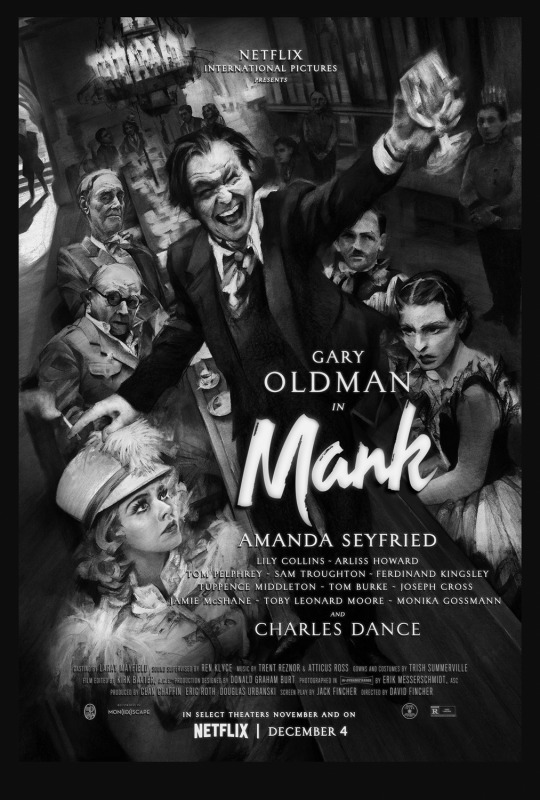
Tastes may have changed during the new millennium in regards to film, and while it may no longer stand alone as the film of films, there was a time when the Orson Welles epic Citizen Kane was almost a shoo-in for spot number one on best film lists. By that rationale, making the decision to make a movie about the so-called ‘greatest film every made’ would seem like a bit of a fool’s errand... even more so when you take into account the many portrayals and stories that surround Orson Welles. If one was to climb this seemingly unsurmountable mountain, the direct approach does not seem like the most rationale one, and it was this stroke of genius that more than likely led the prolific David Fincher to create a modern day masterpiece in the form of Mank.
After a car crash puts him in recovery from a broken leg, screenwriter Herman J. Mankiewicz (Gary Oldman) is tasked by radio star turned director Orson Welles (Tom Burke) to write his next film, for which Welles has been given complete creative freedom by RKO Pictures. While dictating the script to his secretary Rita Alexander (Lily Collins), Mankiewicz (affectionately referred to as Mank by his friends and peers) reminisces on his time at Paramount and MGM Studios, his relationships with studio head David O. Selznick (Toby Leonard Moore), newspaper tycoon William Randolph Hearst (Charles Dance) and his mistress Marion Davies (Amanda Seyfried), the political machinations of Irving Thalberg (Sam Troughton) to undermine Upton Sinclair’s (Bill Nye) run for Governor of California, his troubled relationship with MGM studio head Louis B. Mayer (Arliss Howard), and the death of his director colleague Shelly Metcalf (Jamie McShane). Alexander immediately sees the comparisons in the script to Hearst, with whom Mank has a vendetta, yet despite warnings from all parties connected to the film and his life, Mank pushes forward in the creation of the controversial film.
Mank does a fantastic job of portraying a man with a healthy balance of personal demons and secretive actions that is dead set on writing a hit piece to bring down the man synonymous with American media. As a writer and orator, Mank has a deep understanding and hidden fear in regards to the power of his words, and a regret that surfaces when these powerful words hurt those that he cares for. With no true life-altering stakes on the table, the pressure in Mank is created by the limitations of an already outdated and stifled Hollywood machine sitting at the height of its powers, and the drive to create honest, moving art outside of said limitations. As a man, Mank stands on principles built by a history of tangible changes he has made on the humble, and it is strengthened by the consistent backlash he faces for these actions, and the combination of these things leaves him with a visible and seething resentment for Hollywood. Once Mank’s resolve is built up to the point that he can no longer be harmed, the focus turns toward punishment and manipulation of those close to him, which serves as a reminder of how the Hollywood system can find you irreplaceable in one moment and wholly disposable within the next.
On a subtext level, Mank is a movie about movies, and is hyper-conscious of the ‘script-to-screen’ process in a way that informs the narrative while also analyzing it deeply. David Fincher manages to transport his cast (and in turn, us as viewers) to a completely different time, landing us somewhere between a reimagining of Billy Wilder’s Sunset Boulevard and a dark take on Singin’ in the Rain. The film also gives us insight into how creatives were able to wrestle creative independence away from a dominating and overwhelmingly controlling studio system. Despite being a clear big budget, Hollywood-level production, the film is honest about the intentions of the Hollywood system, with Fincher’s version of Louis B. Mayer speaking directly about the commodification of emotions, be it Hollywood being “the business where the buyer gets nothing for his money but a memory”, or how “what he bought still belongs to the man who sold it.
As a film that examines a film which in turn examined an altered version of reality, the historical observations have surprising weight to them. The way that Louis B. Mayer idolized the character and power of William Randolph Hearst is prominent throughout the film, giving viewers and film fans even more of an understanding why Citizen Kane was viewed as such a problematic film at the time it was released. By comparison, Mayer was willing to ignore a similarly power hungry manipulator in the form of Adolph Hitler, but only due to how it would impact his German box office returns, and on no grounds of principle. Mayer and Hearst also viewed Upton Sinclair as a direct threat, specifically due to how Sinclair portrayed Hearst in his prominent book The Jungle, so in turn, the duo found ways to undercut Sinclair socially and politically through the power of manipulated media : the social, entertainment, news and political power games the men created in the form of propaganda served to ruin Sinclair with no regard for the moral fallout it left on the studio side. In turn, Mank’s attempt to take power back was crystalized in the form of his Citizen Kane script.
Mank is an attempt at an ambitious but subtle companion-piece to Citizen Kane that works surprisingly well, mainly due to the ways that its throwback style compliments Welles’ forward thinking innovation. Despite being a modern day film, Fincher seemingly went through great lengths to present it in an old school manner... the film looks, sounds and feels like it used dated techniques, such as area mics, rear projection, visual expositional setups and a touch of German impressionism. I personally found the ‘cigarette burns’ digitally-inserted (I’m guessing) at the end of each ‘reel’ a satisfying touch that almost nobody will notice. The costuming, set design and score are deeply immersive... at times, I forgot that I was watching a film that was not even a year old. Speaking of the score, the way that Trent Reznor and Atticus Ross were able to make it so period-specific is an achievement in its own right, as it brings an enhanced sense of life and attitude to our perception of the film, while informing on what we see in a way that many modern day films now shy away from. The writing is snappy and witty, calling back to a bygone era without drowning in tropes, and giving the actors just enough to work with without venturing into the realms of overacting or chewing up the scenery.
Gary Oldman continues to display an amazing talent for completely inhabiting the skin of his characters, losing himself in a way that not many actors are able to, while leaving enough of himself in the performances for us to marvel at his abilities. Amanda Seyfried is a pleasure to behold in Mank, with her incredible growth as an actress on full display, including a wonderfully entertaining Brooklyn accent. Tom Burke does everything short of looking exactly like Orson Welles, capturing the youthful vigor and excitement of the director while also managing to display shades of the domineering character traits he became infamous for. Arliss Howard and Charles Dance lean into their larger than life portrayals of powerful men with little to no regard for the ‘common man’. Lily Collins serves as a dramatic foil to Oldman while managing to display deep personality traits of her own. Other notable performances come from Tom Pelphrey, Ferdinand Kingsley, Jamie McShane, and a surprising appearance from Bill Nye, with Tuppence Middleton, Sam Troughton, Joseph Cross and a few others chipping in with strong support.
2020 has been a strange year for film, and as a lover of the theater experience, I’ve found that my viewing of films, especially new releases, took a severe nosedive this year. I can say with complete honesty and certainty, however, that even if I’d seen every film of the year, I’d still stand behind my feelings that Mank is the film of the year. I wholly expect it to clean up at every award show next year, and it will serve as a perfect benchmark when compared to other films of 2020 that I haven’t seen, specifically as to whether or not they are worth seeing. David Fincher continues to make brilliant work, and even after a six year hiatus, he has returned like he never left.
#ChiefDoomsday#DOOMonFILM#DavidFincher#Mank#GaryOldman#AmandaSeyfried#LilyCollins#ArlissHoward#TomPelphrey#SamTroughton#FerdinandKingsley#TuppenceMiddleton#TomBurke#JosephCross#JamieMcShane#TobyLeonardMoore#MonikaGrossman#CharlesDance#LevenRambin#BillNye#Jeffharris#TrentReznor#AtticusRoss
1 note
·
View note
Text
So You Want To Be An Ally
Over the last 2 weeks, I have been fielding many white-guilt questions at work and having very interesting conversations and Zoom calls. Overall, they have been well received, but I am not sure if anything will happen once this is no longer a hot topic. I hope we keep up the momentum, but the media and Politicians and other power holders will try to silence us as quickly as possible. All of the companies realizing that #BlackLivesMatter will inevitably fade away as well. WE HAVE TO KEEP THE PRESSURE ON. So I made a list of talking points for the company that I work for, I hope they put it to use. I will begin sending this to anyone that reaches out to me to “talk” or “to see if I am ok”. While I appreciate the concern (if it’s genuine), I cannot continue being your only Black friend or the only Black person that you feel comfortable speaking to.
I saw this on Twitter recently, White privilege doesn't mean that your life hasn't been hard, it just means that the color of your skin isn't one of the things that makes it harder. I think this pretty much sums up what white people need to understand, what those people calling themselves our allies need to understand. Having Black pride & saying Black Lives Matter should not offend anyone. It does not mean that we are anti white people.
Black people are not a monolith. While we have all experienced racism in some form or another, we do not share the exact same experiences with it. To try and get an overall view of the different types of racism, you need to speak to many different Black people. Stop treating us as a collective, we are all individuals. Racism has permeated every single institution in this country. Education, Housing, Banking, Healthcare, Criminal Justice, Entertainment, etc. Racism is very much systemic, not always overt. There are also many different microaggressions that do not present as overt racism. Also, if we are going to have these discussions, please make sure that we feel safe, that we will be heard without reprimand or cynicism or disbelief. Our silence is the reason why this has gone on for so long. We want to be heard. We are no longer willing to stay invisible. Fear makes many of us stay silent, not willing to upset the status quo.
Revamp your hiring strategy/quota. People and organizations tend to conflate diversity and inclusivity. They are NOT the same. While there are many women, LGBTQIA members, Black and other People of Color, the Executives, Sales Management, and HR do not reflect this.
Conversations about race and other social justice issues are uncomfortable. Having these conversations without any Black and People of color present is pointless. Make sure you have Black people and other People of Color in any discussions you have regarding race relations and any other social justice issues. Empathy and sympathy is great, but it will not replace an actual experience.
Understand that the current state of the world has been a long time coming. George Floyd was the straw that broke the camel's back. The only difference is that everyone has a camera now and the police aren't doing themselves any favors by brutalizing everyone who is protesting police brutality.
Acknowledge your privilege. Acknowledge that the system is built to benefit you more than it does us and that it always has.
Saying "I'm not racist" isn't enough anymore. You have to be anti-racist. You have to stop the jokes, stereotypes, etc amongst your circle of friends and family members. This will be hard. But Black and Brown lives have to matter more than offending anyone that is unwilling to change.
Racism is not up to Black people and other People of Color to solve. This wasn't created or instituted by us and as we remain the "minority" in positions of power, we are unable to change it. We only have the ability to fight it, to rise up and demand change. To show that we will no longer take it. We will no longer be silent. We were all taught to be quiet and hold our feelings in to make sure that white people are comfortable. To make sure that we don’t appear threatening or angry. That is changing. Things will not go back to the way that they were.
Books to read in your journey of becoming an ally:
How To Be An Antiracist - Ibram X. Kensi
White Fragility: Why It's So Hard for White People to Talk About Racism - Robin Diangelo
So You Want To Talk About Race - Ijeoma Oluo
Me and white Supremacy - Layla F. Saad
The New Jim Crow: Mass Incarceration In The Age of Colorblindness - Michelle Alexander
Stamped from the Beginning: The Definitive History of Racist Ideas in America - Ibram X. Kendi
Between the World and Me - Ta-Nehisi Coates
Notes of A Native Son - James Baldwin
Born A Crime - Trevor Noah
Eloquent Rage: A Black Feminist Discovers Her Superpower - Brittany Cooper
Reproductive Injustice: Racism, Pregnancy, and Premature Birth - Dana-Ain Davis
Racism without Racists: Colorblind Racism and the Persistence of Racial Inequality in the United States - Edwardo Bonilla-Silva
Towards the Other America: Anti-Racist Resources for White People Taking Action for Black Lives Matter - Chris Crass
Two Faced Racism: Whites in the Backstage and Frontstage - Leslie Picca and Joe Feagin
How To Be Less Stupid About Race: On Racism, White Supremacy and the Racial Divide - Crystal Fleming
The Ethnic Project: Transforming Racial Fiction into Ethnic Factions - Vilna Bashi Treitler
Race and Racisms: A Critical Approach - Tanya Golash Boza
Racist America: Roots, Current Realities, and Future Reparations - Joe Feagin
White Rage; the Unspoken Truth of Our Racial Divide - Carol Anderson
Black Americans - Alphonso Pinkney
Medical Apartheid: The Dark History of Medical Experimentation on Black Americans from Colonial Times to Present - Harriet Washington
The Hollywood Jim Crow: The Racial Politics of the Movie Industry- Maryann Erigha
Code of the Street - Elijah Anderson
The Wretched of the Earth - Frantz Fanon
The Mis-Education of the Negro - Carter Woodson
UNESCO General History of Africa, Vol.1 - Joseph Zerbo
UNESCO General History of Africa, Vol. 2 - G. Mokhtar
Black Wealth/White Wealth - Melvin Oliver and Thomas Shapiro
Why Are All the Black Kids Sitting Together in the Cafeteria? And Other Conversations About Race - Beverly Daniel Tatum
Uprooting Racism: How White People Can Work for Racial Justice - Paul Kivel
Witnessing Whiteness - Shelly Tochluk
Race Talk and the Conspiracy of Silence: Understanding and Facilitating Difficult Dialogues on Race - Derald Wing Sue
The Emperor Has No Clothes: Teaching about Race and Racism to People Who Don't Want to Know - Tema Jon Okun
Understanding White Privilege: Creating Pathways to Authentic Relationships Across Race - Frances Kendall
The Possessive Investment in Whiteness: How White People Profit from Identity Politics - George Lipsitz
Waking Up White, and Finding Myself in the Story of Race - Debby Irving
How I Shed My Skin: Unlearning the Racist Lessons of a Southern Childhood - Jim Grimsley
Everyday White People Confront Racial and Social Injustice: 15 Stories - editors = Eddie Moore, Marguerite W. Penick-Parks & Ali Michael
Understanding and Dismantling Racism: The Twenty-First Century Challenge to White America - Joseph Barndt
Beyond the Pale: White Women, Racism, and History - Vron Ware
Charleston Syllabus: Readings on Race, Racism, and Racial Violence - editors = Chad Williams, Kidada E. Williams & Keisha N. Blain
We Have Not Been Moved: Resisting Racism and Militarism in 21st Century America - editors = Elizabeth Betita Martinez, Matt Meyer & Mandy Carter. Forward by Cornel West. Afterword by Alice Walker & Sonia Sanchez
killing rage: Ending Racism - bell hooks
Acting White? Rethinking Race in Post-Racial America - Devon W. Carbado and Mitu Gulati
Towards Collective Liberation: Anti-Racist Organizing, Feminist Praxis, and Movement Building Strategy - Chris Crass
White Like Me: Reflections on Race form A Privileged Son - Tim Wise
White Trash: Race and Class in America - editors = Annalee Newitz & Matt Wray
Rise of the Warrior Cop: The Militarization of America's Police Forces - Radley Balko
Race Traitor - editors = Noel Ignatiev & John Garvey
Feeling White: Whiteness, Emotionality, and Education (Cultural Pluralism #2) - Cheryl E. Matias
Disrupting White Supremacy
Hillbilly Nationalists, Urban Race Rebels, and Black Power: Community Organizing in Radical Times - AmySonnie, James Tracy
For White Folks Who Teach in The Hood...and the Rest of Y'all Too: Reality Pedagogy and Urban Education (Race, Education, and Democracy) - Christopher Emdin
Benign Bigotry: The Psychology Subtle Prejudice - Kristin J. Anderson
Subversive Southern: Anne Braden and the Struggle for Racial Justice in the Cold War South (Civil Rights and the Struggle for Black Equality in the Twentieth Century) - Catherine Fosl
How Jews Became White Folks and What That Says About Race in America - Karen Brodkin
America's Original Sin: Racism, White Privilege, and the Bridge to a New America - Jim Wells
Why I'm No Longer Talking to White People About Race - Reni Eddo-Lodge
Living Into God's Dream: Dismantling Racism in America - editor = Catherine Meeks
Promise And A Way Of Live: White Antiracist Activism - Becky Thompson
What Does It Mean to Be White?: Developing White Racial Literacy (Counterpoints #398) - Robin Diangelo
6 notes
·
View notes